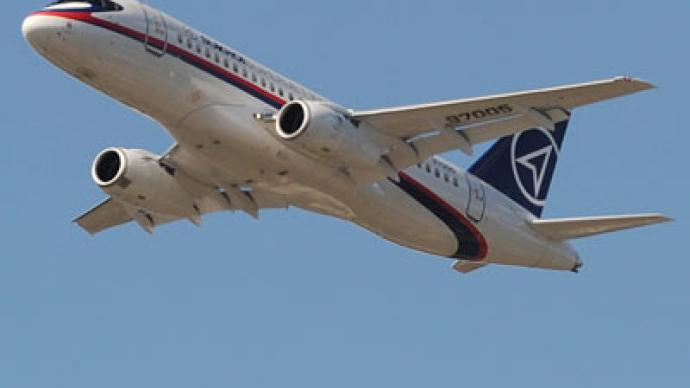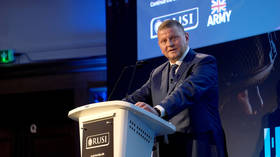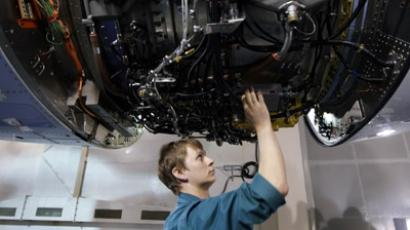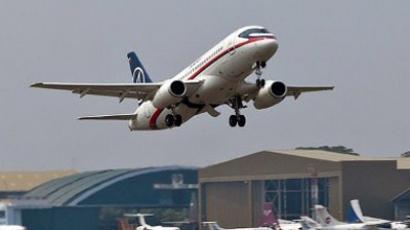Armavia gives Superjet-100 the boot

The first customer of the Sukhoi Superjet-100 airliner has decided it’s no longer going to fly the type. Armenian airline Armavia became the launch customer of the 100 seat aircraft taking delivery of a plane in 2011.
Armavia has refused to go through with the purchase of a second plane, and both are now at the Sukhoi civil aircraft test facility in Zhukovsky outside Moscow. The RBC daily quotes the plane maker’s spokesman Andrei Muraviev, “So far we haven’t received any official request to cancel the purchase. We are trying to resolve all issues arising in relations with Armavia.”Another source familiar with the situation told the newspaper that Armavia owes Sukhoi money for servicing of the first plane and refuses to pay. Armavia reportedly used a loan from an Armenian bank to acquire the plane. Sukhoi Civil Aircraft has reportedly already offered to restructure the deal with the Armenian airline, and arrange delivery of both Sukhoi aircrafts through a leasing company."The plane is not bad, but not perfect. Airbuses and Boeings fly 330-350 hours per month, while the Sukhoi spent only 150 hours flying, " RBC daily quotes a source close to Armavia. “The last straw was it spent four days clearing customs in Russia to have a two-day service. But Armavia warned Sukhoi in July that it will under no circumstances use the plane” says the source. “Armavia is a small company and cannot afford experimenting and Sukhoi has already returned the money paid for the plane excluding the $1 million servicing fee,” concludes the source.Armavia started operating the first Sukhoi Superjet plane in April 2011. The second plane was expected to be handed to the carrier last year, but it delayed delivery. In early July 2012 representatives of the Armenian airline said the airline had decided to give up the second Sukhoi SuperJet to buy aircraft from Boeing and Airbus, which offer cheaper servicing and spare parts. According to Armavia President Mikhail Bagdasarov, Russia has also not worked out a scheme of financing the supply of equipment to foreign companies by providing government guarantees such as lower rates for loans.Branded as the first civilian aircraft developed from scratch in modern Russia, the SSJ-100 consists of more than 60% internationally produced components. Sukhoi however claims the jet has relatively low service costs and a fuel consumption advantage over its competitors, which would potentially bring Sukhoi new contracts, particularly after the Russian Accounting Chamber reported that the Sukhoi project has been severely underfunded through state-run programs. Another headache is that commercial loans cannot fill in the gap as the manufacturer, Sukhoi Civil Aircraft, has too large a debt portfolio to take any out. In 2003-2010, the federal government spent a total of $518 million on the SSJ-100 project through the aircraft development program, while Sukhoi drew another $842 million in off-budget investment. This means that more than $1.3 billion has already been spent on the SSJ-100, and is more than it was spent on the development of similar jets by Canada’s Bombardier and Brazil’s Embraer which required around $600 million each, and $100 million spent on the Tupolev TU-334 since 1992.The Sukhoi Superjet-100 has suffered a series of setbacks in the past few months after a tragic crash during a demonstration flight in Indonesia on May 9 that killed 45 people on board. The crash, however, was attributed to human error.A Sukhoi Superjet-100 airliner with 64 passengers and six crew members on board had to make an emergency landing at Sheremetyevo Airport last week due to a technical problem, RIA-Novosti reported on Friday. At the recent Farnborough Air Show, many potential customers were reluctant to commit after the Indonesian accident, suspending orders until the results of the investigation are announced. Sukhoi did not conclude any contracts, only announcing that Mexico’s Interjet’s option has been turned into an order, and that the company plans to bring the number of jets on its portfolio to 210 over the next few months, signing contracts with three Asian airlines.














